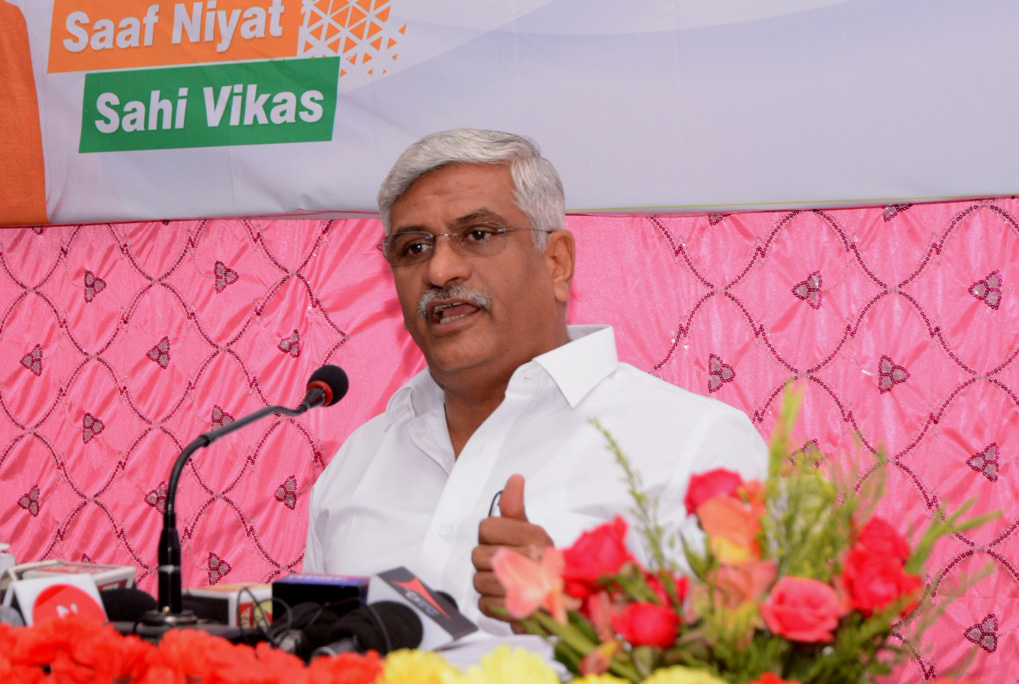Minister of Culture and Tourism in 2024
In 2024, Shri Gajendra Singh Shekhawat became India’s Minister of Culture and Tourism, a major position. The hiring of Shekhawat, who is renowned for his energetic leadership and creative style, was viewed as a calculated move to strengthen India’s cultural legacy and encourage travel. This blog examines his history, accomplishments, projects, and the effects of his leadership on India’s tourist and culture industries.
Background and Early Life
On October 3, 1967, Shri Gajendra Singh Shekhawat was born in Jaisalmer, Rajasthan. He is from a Rajput family with a long history of devotion to the country and duty. Shekhawat continued his schooling in Rajasthan, where he eventually earned an MBA in addition to a degree in philosophy. His academic training and intense interest in culture and history provided a strong basis for his future work in public service.
Political Career
Shekhawat’s engagement in student politics marked the beginning of his political career. He actively participated in the Rashtriya Swayamsevak Sangh (RSS) student organization, Akhil Bharatiya Vidyarthi Parishad (ABVP). Within the business, he was recognized very quickly for his leadership abilities and commitment.
As a Bharatiya Janata Party (BJP) member, he formally entered the mainstream of politics. Shekhawat won a seat in the 16th Lok Sabha in 2014, representing the Jodhpur constituency. He was re-elected in 2019 as a result of his successful representation of his constituency and his engaged involvement in legislative discussions.
Shekhawat focused on water management and conservation when he was nominated as the Union Minister of Jal Shakti in 2019. During his time as Minister of Jal Shakti, he spearheaded important projects including the Jal Jeevan Mission, which aims to supply piped water to every Indian home.
Appointment as Minister of Culture and Tourism
Due to his shown ability to lead and his forward-thinking style, Shri Gajendra Singh Shekhawat was named Minister of Culture and Tourism in 2024. This position was especially important since it merged the duties of protecting India’s rich cultural legacy with advancing tourism, which is essential to the nation’s economy.
Vision and Goals :
Shekhawat presented a distinct vision for the Ministry of Culture and Tourism as soon as he assumed office. His main objectives were.
Preservation and Promotion of Cultural Heritage:
The goal of Shekhawat was to bolster initiatives to protect India’s rich cultural legacy, which includes its artwork, customs, and monuments.
Boosting Tourism:
By implementing focused marketing efforts, streamlining the visa application process, and enhancing infrastructure, he aimed to increase India’s attractiveness as a travel destination worldwide.
Digital Initiatives:
Shekhawat intended to use digital platforms, such as virtual tours and digital archives, to promote culture and tourism since she understood how important technology is.
Sustainable Tourism:
In order to preserve India’s natural and cultural treasures for future generations, he promoted eco-friendly tourist practices, highlighting the importance of sustainability.
Key Initiatives and Achievements
Shekhawat accomplished important milestones and initiated numerous important projects during his term.
Cultural Heritage Conservation:
Heritage Conservation Fund:
Shekhawat set up a special fund for the preservation and repair of historical sites and monuments. In order to ensure the preservation of India’s historic assets, this money was utilized to assist a variety of initiatives around the nation.
Adopt a Monument Scheme:
Both individuals and business entities were urged to adopt and preserve historical monuments under this program. Numerous significant sites were maintained with the assistance of this public-private cooperation concept.
Tourism Promotion:
Incredible India 2.0 Campaign:
Building on the prior Incredible India campaign’s popularity, Shekhawat unveiled an improved version that put a spotlight on lesser-known locations. To draw visitors, this campaign made use of influencers, digital marketing, and social media.
Ease of Travel:
Shekhawat focused on streamlining visa requirements in order to make travel easier, including the expansion of e-visa services to other nations. Arrivals of tourists were greatly increased by this action.
Infrastructure Development:
Understanding the value of infrastructure, Shekhawat launched initiatives to increase air, train, and road access to popular tourist locations.
Digital Initiatives:
Virtual Tourism:
Virtual tours of important museums and cultural places were encouraged by Shekhawat in response to the rising trend of virtual experiences. India’s cultural riches are now available to a worldwide audience thanks to this endeavor.
Digital Archives:
He started a project to digitize historical documents, objects, and manuscripts from India’s extensive cultural archives. This online archive has grown to be a useful tool for scholars and fans around.
Sustainable Tourism:
Eco-friendly Practices:
Shekhawat placed a strong emphasis on eco-friendly lodging, trash management, and the utilization of renewable energy sources. These programs sought to reduce tourism’s negative environmental effects.
Community-Based Tourism:
He supported tourism strategies that include local populations with tourist-related activities. This strategy guaranteed the preservation of cultural customs while also benefiting the local community economically.
Cultural Festivals and Events:
National Cultural Festivals:
Shekhawat arranged a number of national cultural events that highlighted the rich diversity of Indian history. These festivities, which took place throughout several states, featured traditional dance, music, crafts, and food.
International Collaborations:
By collaborating with other nations to organize events, he promoted cross-cultural interactions. Through these exchanges, global cultures were introduced to Indian audiences and Indian culture was further promoted outside.
Impact on Culture and Tourism
During his stint as Minister of Culture and Tourism, Shri Gajendra Singh Shekhawat had a significant effect on both industries:
Enhanced Global Presence:
India had a notable surge in visitor arrivals because to enhanced infrastructure and effective marketing. The many marketing initiatives increased global tourism and employment by drawing in visitors.
Cultural Preservation:
Future generations will be able to enjoy India’s cultural legacy because to the emphasis on conservation and digital archiving. In particular, the Adopt a Monument program provided much-needed funding for historical monument preservation.
Sustainable Practices:
Shekhawat’s focus on environmentally friendly tourist techniques lessened the negative effects of tourism on the environment. A balanced approach to development was guaranteed via the promotion of eco-friendly projects and community-based tourist concepts.
Increased Accessibility:
Tourism in India has become simpler for visitors with the advent of e-visa services and increased connectivity. A worldwide audience may now explore India’s cultural riches thanks to the virtual tours and digital archives.
Cultural Integration:
A spirit of cultural appreciation and integration was promoted via international cooperation and national cultural events. These gatherings fostered intercultural understanding while honoring India’s uniqueness.
Challenges and Criticisms
Even though Shekhawat’s reign was filled with many accomplishments, there were difficulties and complaints as well:
Infrastructure Gaps:
Some isolated and rural tourist locations continued to have infrastructural issues despite advancements. The administration persisted in trying to close these gaps.
Overcrowding at Popular Sites:
More visitors meant more people at popular locations, which put strain on the area’s infrastructure and resources. Shekhawat attempted to solve these problems through its sustainable tourism programs.
Balancing Modernization and Tradition:
There are worries that the traditional methods of experiencing culture may disappear as a result of the digitalization of cultural assets and the promotion of virtual tourism. Shekhawat stressed how crucial it is to strike a balance between modernity and tradition preservation.
Community Involvement:
Even while community-based tourism was encouraged, it was still difficult to guarantee that local communities would really gain from it. To successfully involve the local populace in tourist activities, ongoing efforts were required.
Personal Traits and Leadership Style
Shri Gajendra Singh Shekhawat’s energetic and inventive attitude was a defining feature of his leadership style. He was renowned for his active participation and his capacity to uplift and encourage his group. His experience in academics and public service provided him with a well-rounded viewpoint that allowed him to tackle problems objectively.
Shekhawat’s actions demonstrated his commitment to sustainable tourism and cultural preservation. He frequently underlined how crucial it is to preserve India’s rich history while enhancing its allure to the world. His futuristic outlook was evident in his vision of an India that was easily accessible and linked to the digital world.
Conclusion
During his 2024 term as Minister of Culture and Tourism, Shri Gajendra Singh Shekhawat accomplished a great deal and took several ground-breaking steps. His initiatives to develop sustainable practices, encourage tourism, and protect India’s cultural legacy have had a long-lasting effect on all three of these areas. Shekhawat’s imaginative leadership has guaranteed that India’s rich cultural history is preserved for future generations while simultaneously enhancing India’s worldwide presence. His voyage still serves as a source of inspiration and direction for Indian culture and tourism.


